This feature was first published in The War Horse.
When a helicopter hovered over an American embassy as U.S. troops pulled out of Afghanistan, it reminded many of an image made 50 years ago in Saigon.
That wasn’t the end of the similarities. As service members, families, and the people who lived in the battle-struck countries watched the end of lost wars, they asked the very same questions:
“Did they die for nothing?”
And, “Why did it take so long?”
Both generations, five decades apart, lack the cohesiveness of the pride that comes with a victory. Both generations faced fluctuating narratives as the mission changed — or remained unclear — and as political and military leaders withheld information and offered falsities to justify continued losses.

But there are many differences, and those differences can leave today’s veterans feeling as if no one cares, as if the citizens who rallied around them and sent them to face injuries and loss and possible death quickly lost interest if they were not connected to the military themselves, as the majority of Americans simply are not.
Today, there’s no societal uproar or protests or outpouring. The previously ubiquitous troop-supporting bumper stickers faded long ago, and reaction to the drawdown ranged from sudden anger at the political level to something closer to a whimper: “I didn’t know we still had troops in Afghanistan.”
“It never ceases to amaze me how little some of our citizens know about the journeys of veterans and really what our service members are doing all around the world,” says Tara Galovski, the director of the women’s health sciences division at the National Center for PTSD, as well as an associate professor of psychiatry at Boston University School of Medicine.
It didn’t, of course, start that way. The planes hit the towers and the Pentagon and a field in Pennsylvania, and the nation rose up to fight the ones “who did this to us.”
But then the fervor faded. No draft to ensure the battles touched all U.S. citizens. No clear mission to rally around. And 20 years. When the youngest troops don’t remember — weren’t born for — the event that sparked the fight, passion fades, even within the armed forces.
This is the narrative a nation created, even if by negligence.
Still.
As the forever wars end, and as the military and the nation move to the next phase of fighting terror and China and Russia, as well as the skirmishes that will arise as resources are diminished, there has to be a way forward, a way to heal, a way to grab hold of a nation’s collective grief — or to build that grief, if the nation does not yet collectively grieve — and frame it; to say, “This is what we learned,” or, “This is what we lost,” or, “These are the ones we remember.”
In our previous wars, victorious or not, the veterans claimed the conversation: “Catch-22.” “The Things They Carried.” Poems, songs, and so on.
“There’s a lot of literature out there,” says Ron Capps, the founder and director of the Veterans Writing Project, as well as an Army veteran of the war in Afghanistan. “But I don’t think there’s yet a narrative like The Things They Carried, a narrative like Catch-22 or any of the World War II novels that came out. And I wonder. … World War I was a poet’s war, World War II, I think, was a novelist’s war. Vietnam, I think, turned out to be a filmmakers’ war, movie makers’ war.”
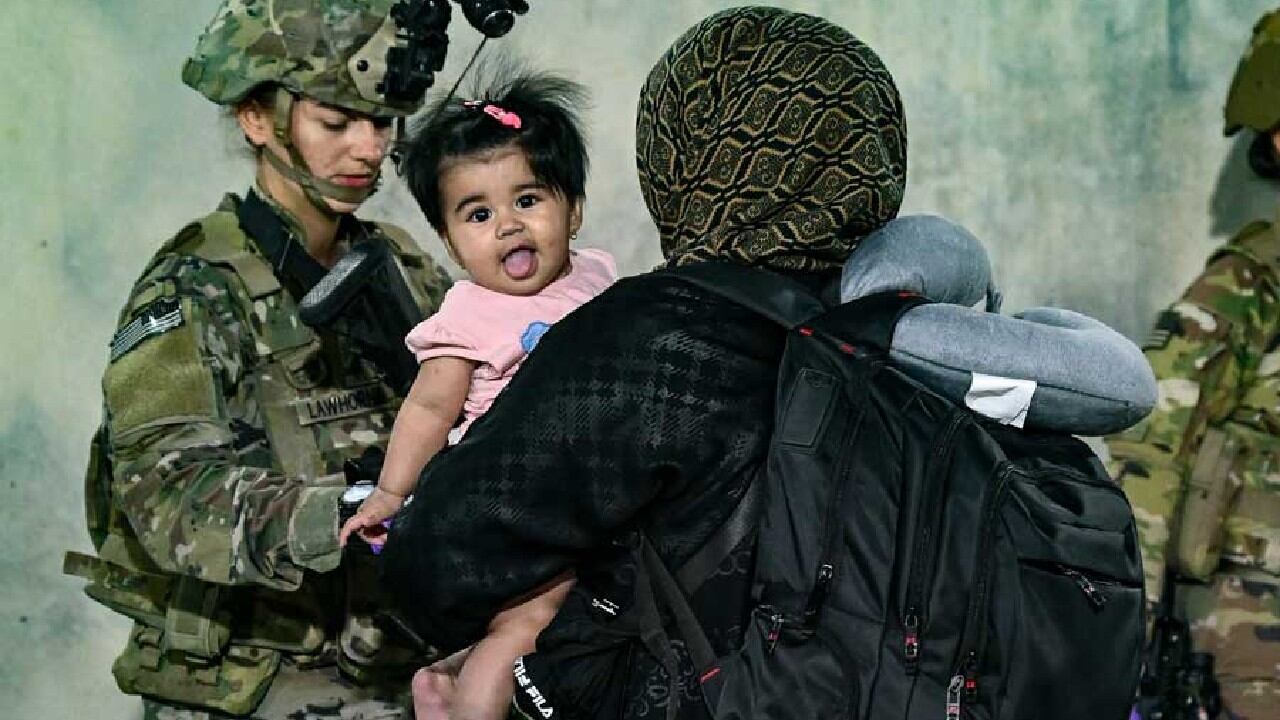
But the forever wars?
“I don’t know what Afghanistan’s going to be yet,” Capps said.
He has an idea. He has worked with veterans for years. Listened to their laughter. Understood the instant comradery that comes from shared jokes, shared dirt, and shared sorrow. The epic tales won’t be of the grand mission or the goals of the generals and politicians.
The veterans will tell their stories: the individual, poignant bits that help people to understand and to care. They already tell the tales, stories with beginnings, middles, and endings, stories that will need to be sorted into something we can bear, that will help us heal. Stories told to friends’ parents, and to their own. To lovers, bosses, and acquaintances.
The veterans?
They will frame the narrative.
‘Just a lot of heart and soul for quite a long time’
While visiting a Veterans Affairs facility in Albany, New York, in mid-October, Veterans Affairs Secretary Denis McDonough asked the staff if they were seeing an uptick in people asking for help as the United States withdrew from Afghanistan, he told reporters in October.
“The answer was, yes, they’re seeing an increase in requests for mental health services connected to Afghanistan,” he says. “Interestingly, it was irrespective of era of the veteran.”
In fact, he says, many of the veterans served during the Vietnam War, and they worried that today’s veterans would face similar backlash to what they did in the 1970s.
“From a VA perspective, our patient population of course is reacting really strongly. … It’s a lot of loss, a lot of questions — what was this worth? — questions around looking forward,” Galovski says. “What’s the meaningfulness of the status of the country? National security issues? All the kinds of things that we hear on the news.”

As of yet, it’s hard to tell if more people have sought out help, she says, because veterans are just starting to come back in as VA hospitals open back up after Covid restrictions. But the Veterans Crisis Line (1-800-273-8255, Press 1) has “gotten more activity,” and she’s seeing more conversations online in the Women Veterans Network, and in listening sessions for all veterans. There’s also been an “uptick” in veterans reaching out to support each other.
The narrative is different for different people, she says. Some may have found relief with the drawdown in Afghanistan — ”It’s over with and all of the loss and suffering can end” — but there’s the flip side: “We had accomplished so much, and now there’s so much loss and suffering because we removed the remaining troops from Afghanistan,” she says.
“I’m hearing much more of the latter,” she says.
‘Afghanistan has not really been a major issue for most people’
About 1.8 million men were drafted during the Vietnam War, according to Selective Service statistics, with about 8.8 million total serving, while today’s military is entirely volunteer. The draft meant that service members came from most communities — rich, poor, educated, uneducated, with the caveat that those with the most resources were the best able to obtain deferments — and that almost everybody knew somebody who served or who could be called to serve.
That meant the country paid attention to what was going on overseas. They also had three network television stations — no internet, no satellite — so there was also a communal element to the news: If Dan Rather reported on it, everyone knew about it. And if Walter Cronkite had an opinion, that was the water-cooler conversation the next day.
But for the wars in Iraq and Afghanistan? Cities no longer offered up their young in similar proportions. Instead, new recruits tended to come from small towns along the coasts and in the South. That meant fewer civilians with children or neighbors who serve.
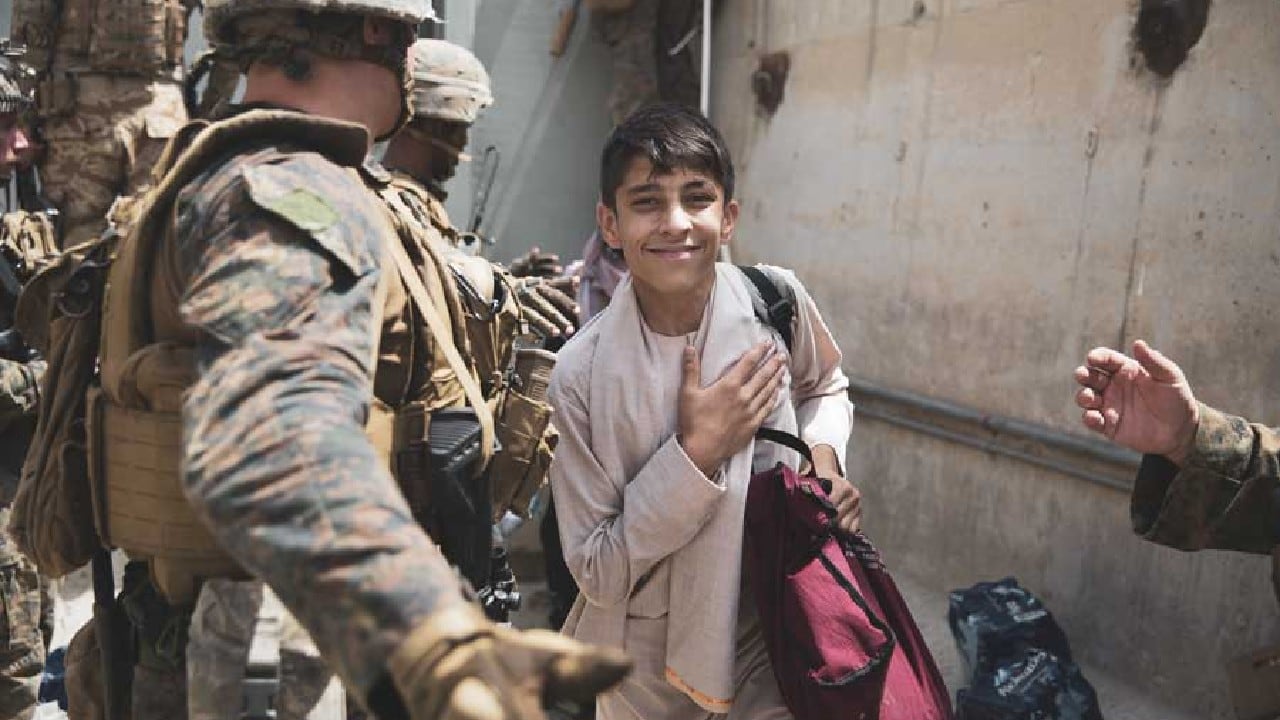
But Frances FitzGerald, who traveled to South Vietnam as a journalist in 1966 and focused on the effects of the war on the local population in her Pulitzer Prize-winning book “Fire in the Lake: The Vietnamese and the Americans in Vietnam,” says the troops themselves were also different, and they changed the narrative long before the war ended.
The service members in Iraq and Afghanistan serve in a professional military, and the end of deployment often means simply a change of duty station. Career service members also understand that their job is to perform the people’s will, and they sign a contract saying they will do just that.
But most draftees spent one year in Vietnam, and, if they lived through it — and the majority of them did — they started counting the days, and often changing their attitudes, as they saw the path toward home. Images from the war show peace signs on helmets and people in uniform at protests.
When the Vietnam War ended, FitzGerald says the nation felt more fury than grief, bringing on what is known as “Vietnam Syndrome,” or the belief that the nation’s leaders could not be trusted to go to war again.
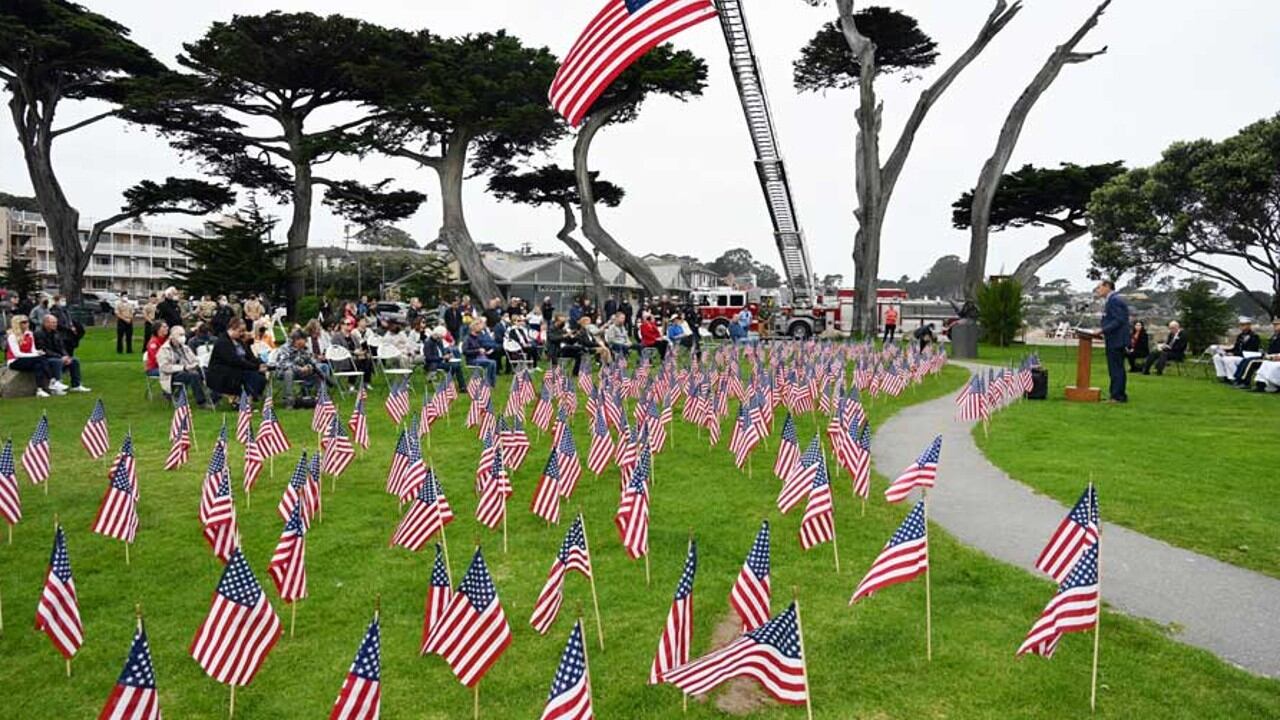
“It’s my belief that very few Americans are grieving about this,” she says, referring to the way the war ended in Afghanistan. “The people that are grieving are the ones who are the families of the soldiers who were killed there. But Afghanistan has really not been a major issue for most people, I don’t think—certainly recently, because the numbers of troops there have been quite low, and the casualties very few, by comparison to Iraq, as well as Vietnam.”
There’s also a sense that the leadership, rather than the service members, was responsible for failures in the wars in Iraq and Afghanistan, Alexander says.
“Certainly the reception and the climate around Americans supporting veterans is very different in post-9/11 wars than it was in the Vietnam era,” Galovski says. “There’s a lot more support for veterans returning from wars now.”
Jeffrey Alexander, a sociology professor at Yale University and expert in cultural identity and trauma, says there’s a flip side to that coin: He wonders if the same sense of cynicism could develop for wars in which the majority of Americans simply did not engage.
“There’s been no mass movement against the war in Iraq or Afghanistan,” Alexander says. “None. Zero. In a way, it’s allowed these political elites to operate completely with abandon.”
‘It allows them to think they can make war at very little cost’
The post-9/11 veterans must reclaim the narrative, in part, because it’s convoluted, Alexander says. He presented the questions of war: What are we willing to sacrifice? What did we ask the troops to sacrifice for? As service members headed off to Afghanistan in October after the 9/11 attacks, the goal seemed clear: Seek out terrorists and prevent them from attacking us again.
Soon after, the George W. Bush Administration made a case for going to war with Iraq, saying Saddam Hussein had “weapons of mass destruction” — as Bush had said even as he ran for president — and that Hussein had ties to Al Qaeda. On March 19, 2003, the United States launched an air war in Iraq. As the ground war began the next day, troops looked for biological, chemical, and nuclear weapons, but they didn’t find them. Both the weapons accusation and the claim that Hussein had ties to Al Qaeda turned out to be false.
As the hunt for weapons began in Iraq, interest in Afghanistan dissipated. Osama bin Laden escaped in December 2001 after a 12-day battle in Tora Bora, and the Taliban collapsed, leaving its leadership to hide in the mountains. In 2003, Defense Secretary Donald Rumsfeld said the fighting was over, while Bush stood under a “mission accomplished” banner on the USS Abraham Lincoln. Focus turned to Iraq as 8,000 troops remained in Afghanistan, but the mission in both countries became unclear.
“It seems to me, the narrative was broken a long time ago,” Alexander says. “In common-sense terms, the story changed a few times. But there was always an effort to create a fearsome enemy that was apocalyptically dangerous to this country such that it would justify this continuing sacrifice of lives, attention, et cetera.”
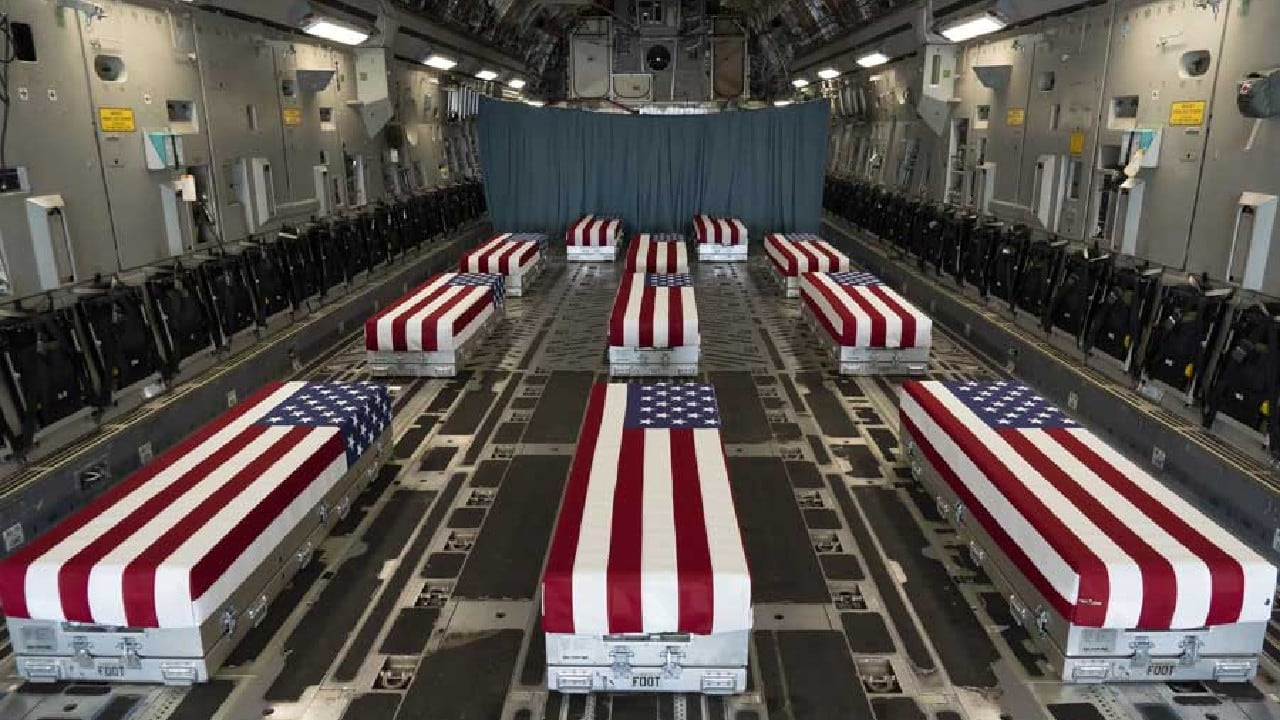
Even as administrations changed, the mission remained unclear. Public affairs pushed for stories about newly built schools and programs for women. Generals argued that the missions were going well, knowing they weren’t.
“Each of those goals failed,” Alexander says. “I mean, democracy didn’t come. Some freedom for women came.”
President Barack Obama came in, and SEAL Team 6 killed Bin Laden in 2011, ostensibly accomplishing the original mission. But by then, the story had changed again. The Islamic State took over portions of Iraq and Syria. They took responsibility for attacks in France, Belgium, and Egypt. They moved into Afghanistan and claimed responsibility for that final attack at the airport in Kabul.
“Was that sense of danger sustained successfully over 20 years despite the blatant changes in the story, as represented within the Bush presidency, then Obama and Trump?” Alexander says. “And then the other question is, is the ending, the pullout — which is, in a way, the end of the story — was it such the kind of thing that would completely undermine something, the goal for which we fought because, hey, the Taliban are back.”
The story, the narrative, morphed because of a lack of audience.
“I think it’s very dangerous to have a volunteer army,” Alexander says, “because it allows leaders to think that they can make wars with little cost.”
‘The veterans need to develop stories’
The veterans, themselves, may be able to change that, Alexander says.
“Soldiers volunteer, and they fought and sacrificed as individuals,” he says, “but at the same time, and in that sense, they need a bigger goal — which they had, of course — but there are also studies that have shown since World War II that soldiers think of their platoon and their local group in terms of whether their sacrifice or others’ were worthwhile.”
That, he says, isn’t touched by “broader futility” about meaning or mission. Instead, as famously stated by Vietnam War correspondent Joe Galloway in the movie made from his book, “But in the end, they fought not for their country or their flag, they fought for each other.”
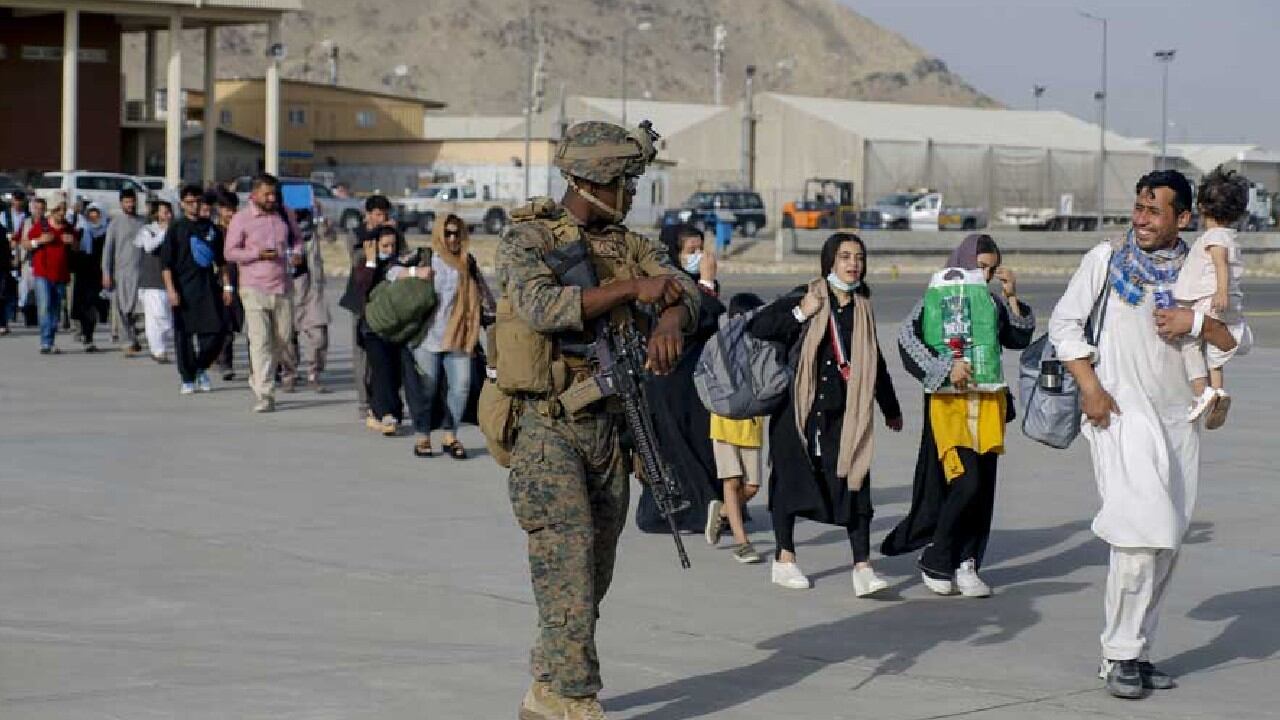
Veterans will — they have — gone out into the world and become politicians, construction workers, authors, technicians, journalists, security workers, producers, actors, and analysts.
They’ve gained rank, neighbors, friends, and families.
They’ve written their stories.
Phil Klay. Elliot Ackerman. Brian Castner. Kayla Williams. Mark Owen. Nick Irving. Anuradha Bhagwati.
When, as Jonathan Shay talks about in “Achilles in Vietnam,” we do not welcome veterans back in a communal way — when we do not listen to their stories, celebrate their victories and mourn their losses, when we do not acknowledge that those stories are our own — that service members act on our behalf, veterans feel yet another loss, a feeling of betrayal, a lack of trust, even in how others tell their stories.
Capps, early in the wars, returned from Afghanistan and wrote a piece for “Foreign Policy,” talking about the possibility of a new lost generation, and saying that, when the wars ended, there would be a reckoning.
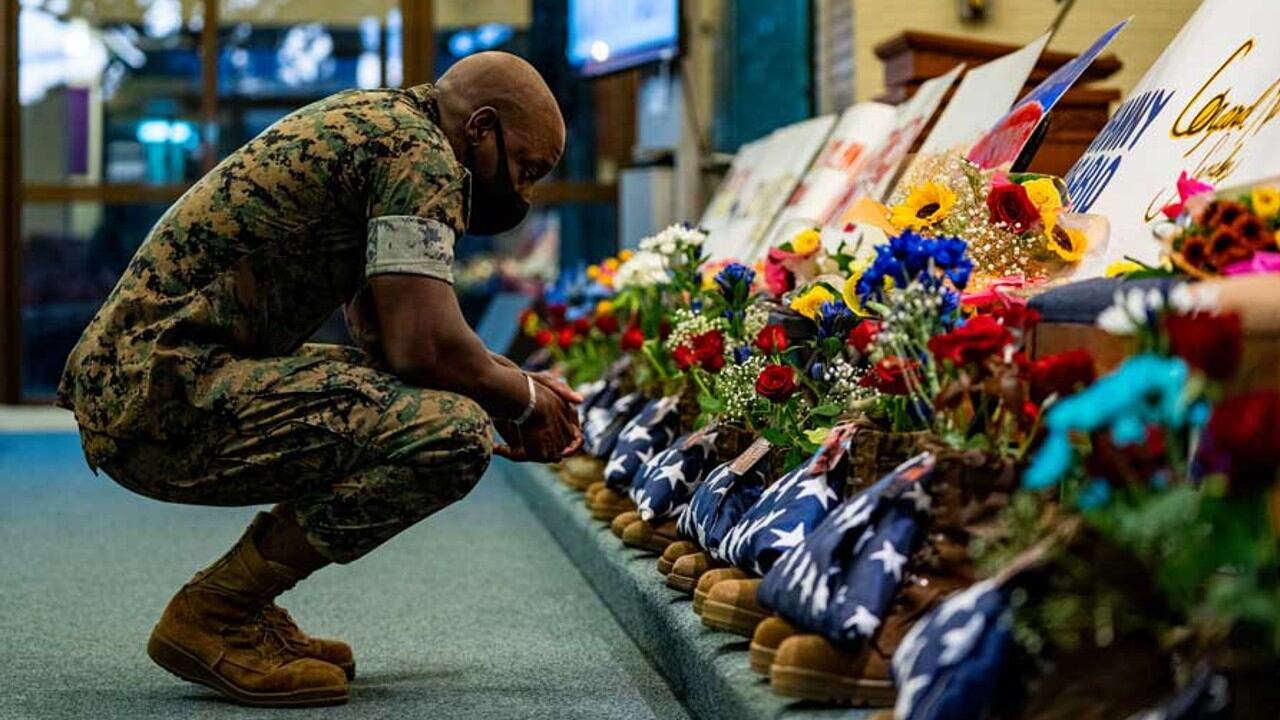
“I was so naive to believe that we actually would have a reckoning,” he says now. “What’s going to happen now, 20 years later? … This is going to be a very individual thing. Several of us are going to sit around, out in the backyard, and have a couple of beers and come to a reckoning ourselves. But I really do not think there is going to be any sort of national reckoning.”
People, beyond those who served and their family members, simply aren’t invested enough, he says. He believes people need to do more than “put a yellow ribbon on the back of their car and say, ‘Thank you for your service,’” for veterans to feel as if the voters who sent them to war were engaged enough in the “blood and treasure” end of things for it to be worth it.
“Ninety-nine percent of Americans sat this round out,” he says, explaining that 1 percent of the population served in Iraq and Afghanistan, even including contractors and government employees. “So it’s this tiny, tiny little population that legitimately lived the war. Most people were told to go shopping.”
Capps teaches healing through narrative — through poetry, stories, and music. The cadence of his voice changes when he speaks of workshops in the desert, veterans’ stories coming out in a new O-Dark-Thirty anthology. But this narrative, the narrative of the whole, will take time.
“Writing and creating narrative has truly become my road home and the way that I’ve dealt with all of this,” he says. He has his own book, “Seriously Not All Right: Five Wars in Ten Years.” “I’m a huge believer in the healing power of the arts, and whether it’s dance, or theater, or two- or three-dimensional graphic arts, fine art, or writing. And within writing, is it narrative, is it poetry or memoir or fiction? Getting a story out of one’s self is, I think … a tool that we can use to do the heavy lifting of healing. It’s not the answer, but it’s a tool.”
Kelly Kennedy is the Managing Editor for The War Horse. As a journalist, she was embedded in both Iraq and Afghanistan. She is the only U.S. female journalist to both serve in combat and cover it as a civilian journalist, and she is the first female president of Military Reporters and Editors. Subscribe here for news from The War Horse.



